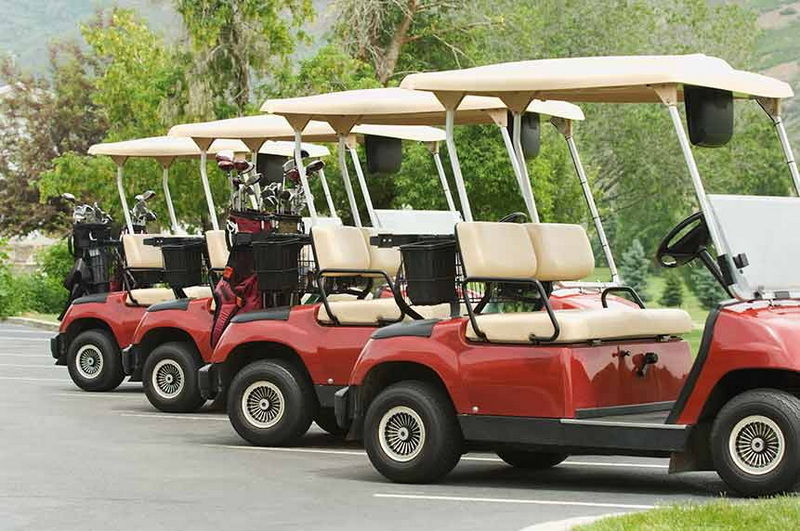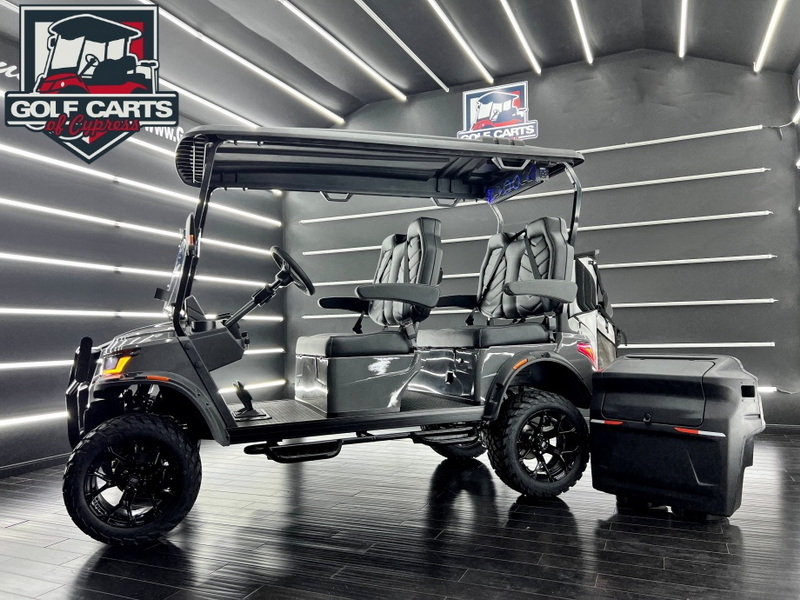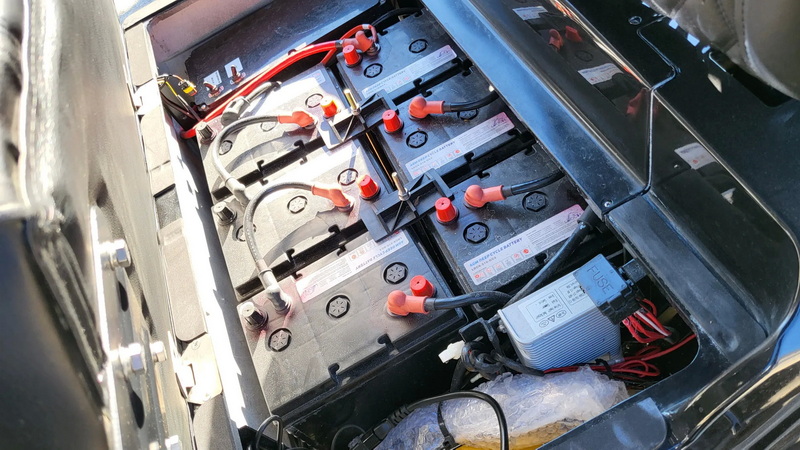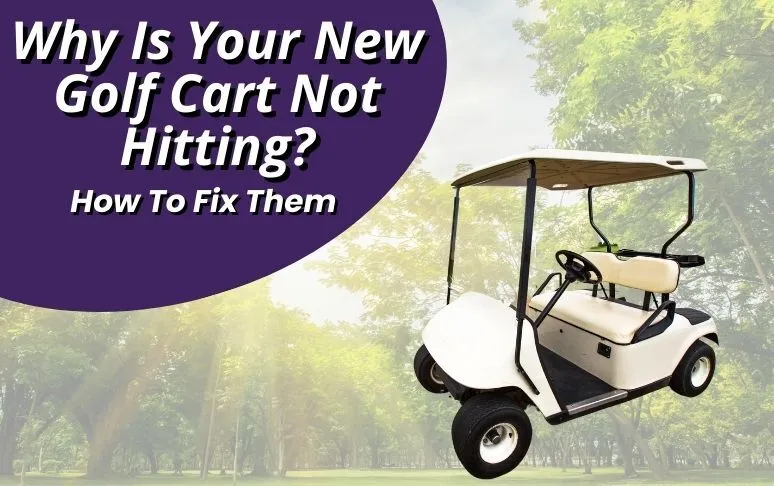Content Menu
● Understanding Electric Golf Cart Mechanics
● Common Causes of Hesitation
>> Battery Issues
>> Motor or Controller Problems
>> Throttle Sensor Malfunction
>> Loose Connections
>> Solenoid Failure
>> Speed Controller Wear
● Troubleshooting Steps
>> Check Battery Voltage
>> Inspect Connections
>> Test Throttle Sensor
>> Examine Solenoid Functionality
>> Evaluate Motor and Controller
>> Consider Professional Help
● Preventative Maintenance Tips
● Understanding Battery Types
● The Role of Weight Distribution
● Environmental Factors
● Conclusion
● FAQ
>> 1. What should I do if my golf cart hesitates when I accelerate?
>> 2. How often should I maintain my electric golf cart?
>> 3. Can I fix hesitation issues myself?
>> 4. What are signs that my battery needs replacing?
>> 5. How do I know if my throttle sensor is faulty?
Electric golf carts are a popular choice for navigating golf courses, parks, and other recreational areas. However, many users experience hesitation when accelerating, which can be frustrating and concerning. Understanding the causes of this hesitation is crucial for maintaining optimal performance and ensuring a smooth ride. This article will explore the common reasons why electric golf carts hesitate during acceleration, along with troubleshooting tips and solutions.

Understanding Electric Golf Cart Mechanics
Electric golf carts operate using a combination of components that work together to provide power and control. The primary components include:
- Battery: Supplies electrical energy to the cart.
- Motor: Converts electrical energy into mechanical energy to drive the wheels.
- Controller: Regulates the power from the battery to the motor based on user input.
- Throttle: The accelerator pedal that sends signals to the controller about how much power is needed.
Understanding how these components interact is essential for diagnosing issues related to hesitation. Each part plays a critical role in ensuring that the cart accelerates smoothly and efficiently.
Common Causes of Hesitation
Several factors can contribute to an electric golf cart hesitating when the accelerator is pressed. Below are some of the most common causes:
Battery Issues
The battery is often referred to as the heart of an electric golf cart. If it is low on charge or has faulty cells, it may not provide sufficient power for acceleration.
- Symptoms: Slow acceleration, reduced speed, or complete failure to move.
- Solution: Check the battery voltage using a voltmeter; it should typically range from 36 to 48 volts. If the voltage is low, recharge or replace the battery.
Batteries can degrade over time due to factors like age, temperature fluctuations, and improper charging practices. Regularly monitoring battery health can prevent unexpected performance issues.
Motor or Controller Problems
The motor and controller are vital for converting electrical energy into motion. If either component is malfunctioning, hesitation can occur.
- Symptoms: Inconsistent acceleration or jerking motion when starting.
- Solution: Inspect the motor for signs of damage or overheating. Check connections and wiring in the controller for loose or burnt components.
A malfunctioning controller may not deliver consistent power to the motor, leading to erratic performance. Ensuring that both components are in good condition is crucial for reliable operation.
Throttle Sensor Malfunction
The throttle sensor detects how much pressure is applied to the accelerator pedal and communicates this information to the controller.
- Symptoms: Delayed response when pressing the pedal or erratic acceleration.
- Solution: Test the throttle sensor; if it shows signs of failure, consider replacing it.
Throttle sensors can wear out over time due to continuous use. Regular checks can help ensure that they function correctly.
Loose Connections
Wiring issues can create resistance in the electrical system, leading to hesitation.
- Symptoms: Intermittent power loss or failure to accelerate smoothly.
- Solution: Inspect all wiring connections for looseness or corrosion. Tighten any loose connections and clean corroded terminals.
Corrosion at connection points can impede electrical flow, causing hesitation during acceleration. Keeping connections clean and secure is essential for optimal performance.
Solenoid Failure
The solenoid acts as a switch that allows current from the battery to flow to the motor when the accelerator is pressed.
- Symptoms: Clicking sounds without acceleration or complete failure to start.
- Solution: Test the solenoid by listening for a click when pressing the pedal; if absent, replace it.
A faulty solenoid can disrupt the flow of electricity needed for acceleration, leading to hesitation or complete failure to move.
Speed Controller Wear
The speed controller manages how much power is sent to the motor based on throttle input.
- Symptoms: Inconsistent speed or inability to maintain speed.
- Solution: Check for wear on the speed controller; if it shows signs of degradation, replacing it may be necessary.
Over time, wear and tear on speed controllers can lead to performance issues. Regular inspections can help identify these problems early on.

Troubleshooting Steps
If your electric golf cart hesitates during acceleration, follow these troubleshooting steps:
Check Battery Voltage
- Use a voltmeter to measure battery voltage.
- Ensure it falls within the recommended range (36-48 volts).
Inspect Connections
- Look for loose wires or corroded terminals.
- Tighten connections and clean terminals as needed.
Test Throttle Sensor
- Observe how the cart responds when pressing the accelerator.
- Replace if there are delays or inconsistencies.
Examine Solenoid Functionality
- Listen for a click sound when pressing down on the pedal.
- Replace if no sound is heard.
Evaluate Motor and Controller
- Check for overheating or damage.
- Consult a professional if issues are detected.
Consider Professional Help
- If you cannot identify the issue, consult with a golf cart technician who can diagnose and repair problems effectively.
Preventative Maintenance Tips
To minimize hesitation issues in your electric golf cart, consider implementing these preventative maintenance tips:
- Regularly check battery health and charge levels.
- Inspect wiring connections frequently for signs of wear or corrosion.
- Clean battery terminals and ensure tight connections at all times.
- Schedule periodic professional inspections of critical components like motors and controllers.
In addition to these tips, it's also beneficial to keep your golf cart clean and free from debris that might obstruct moving parts or affect performance.

Understanding Battery Types
Another important aspect that affects performance is understanding different types of batteries used in electric golf carts:
- Lead-Acid Batteries: These are commonly used due to their affordability but require regular maintenance and have a shorter lifespan compared to other types.
- Lithium-Ion Batteries: These batteries offer longer life spans, faster charging times, and lighter weight but come at a higher initial cost.
Choosing the right type of battery based on your usage patterns can significantly impact overall performance and reduce instances of hesitation during operation.
The Role of Weight Distribution
Weight distribution within an electric golf cart also plays a crucial role in its performance:
- Uneven weight distribution can lead to increased strain on certain components like motors and batteries.
- Ensure that passengers and cargo are evenly distributed across the cart's frame for optimal performance during acceleration.
Environmental Factors
Environmental conditions also influence how well an electric golf cart performs:
- Extreme temperatures can affect battery efficiency; cold weather may reduce range while excessive heat can cause overheating issues.
- Consider storing your golf cart in a climate-controlled environment during extreme weather conditions to prolong battery life and overall functionality.
Conclusion
Hesitation in electric golf carts can stem from various issues related to batteries, motors, controllers, throttle sensors, solenoids, wiring connections, weight distribution, battery types, and environmental factors. By understanding these potential causes and following troubleshooting steps, you can restore your golf cart's performance and enjoy a smooth ride on the greens. Regular maintenance is key to preventing these issues from arising in the first place.

FAQ
1. What should I do if my golf cart hesitates when I accelerate?
Check your battery voltage first; if it's low, recharge or replace it. Inspect connections and components like the throttle sensor and solenoid for faults.
2. How often should I maintain my electric golf cart?
Regular maintenance should be performed at least once every six months or after heavy use to ensure all components are functioning properly.
3. Can I fix hesitation issues myself?
Many minor issues can be addressed with basic tools and knowledge; however, complex problems may require professional assistance.
4. What are signs that my battery needs replacing?
Signs include slow acceleration, reduced range, or failure to hold a charge after recharging.
5. How do I know if my throttle sensor is faulty?
If you experience delayed response when pressing the accelerator pedal or inconsistent speeds while driving, your throttle sensor may need replacement.





















































